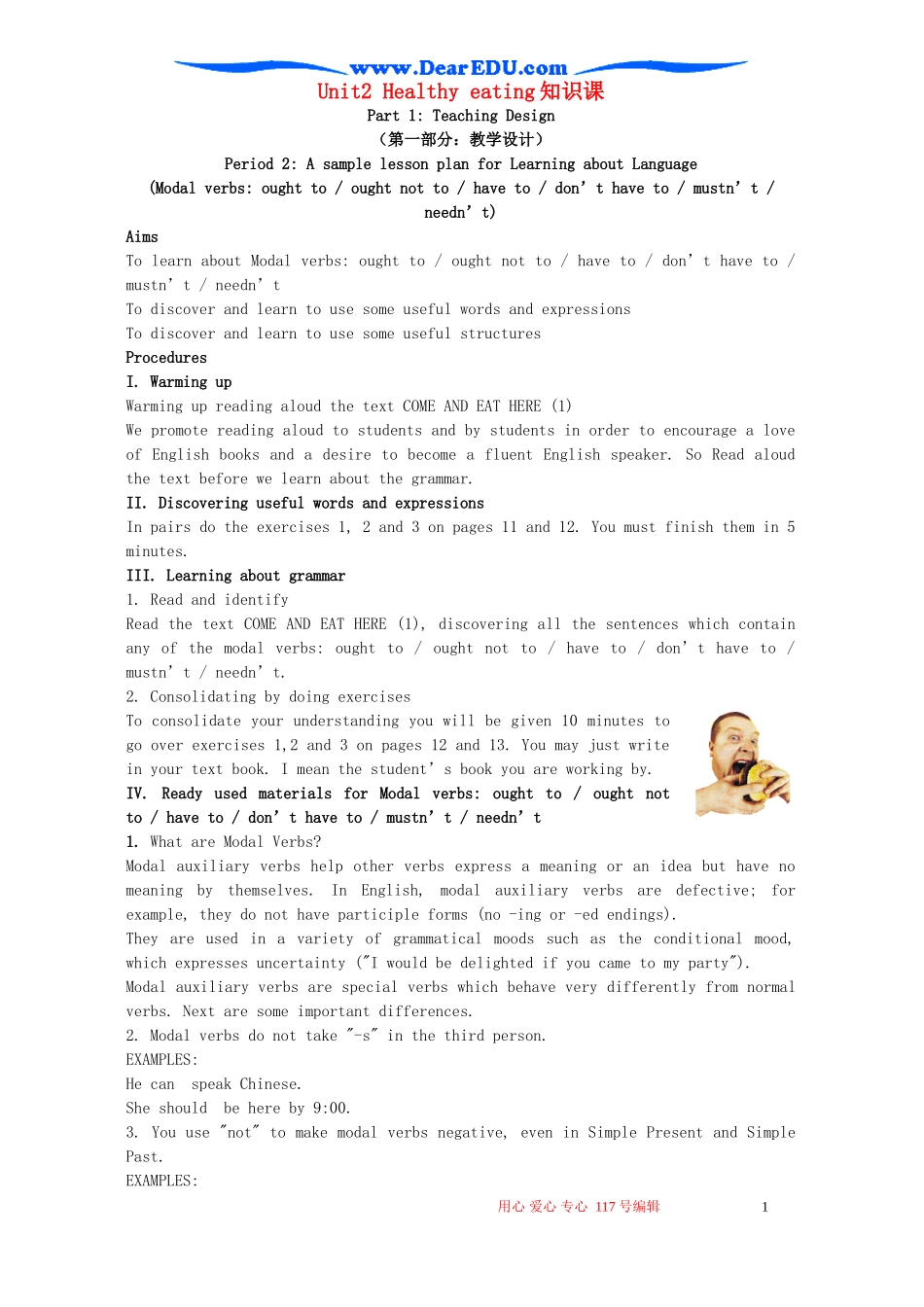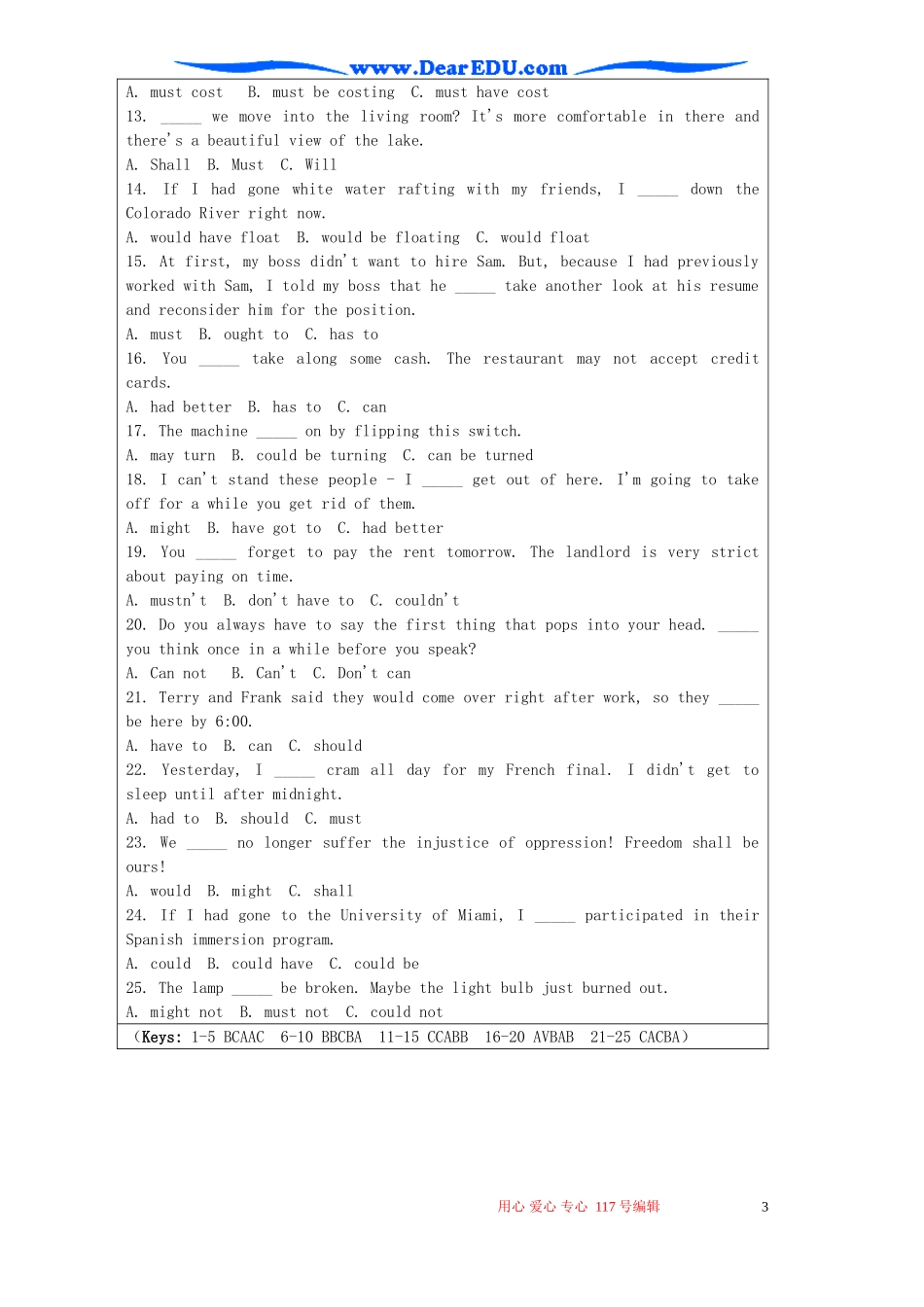Unit2 Healthy eating 知识课Part 1: Teaching Design(第一部分:教学设计)Period 2: A sample lesson plan for Learning about Language(Modal verbs: ought to / ought not to / have to / don’t have to / mustn’t / needn’t)AimsTo learn about Modal verbs: ought to / ought not to / have to / don’t have to / mustn’t / needn’tTo discover and learn to use some useful words and expressionsTo discover and learn to use some useful structuresProceduresI. Warming upWarming up reading aloud the text COME AND EAT HERE (1)We promote reading aloud to students and by students in order to encourage a love of English books and a desire to become a fluent English speaker. So Read aloud the text before we learn about the grammar.II. Discovering useful words and expressionsIn pairs do the exercises 1, 2 and 3 on pages 11 and 12. You must finish them in 5 minutes.III. Learning about grammar1. Read and identifyRead the text COME AND EAT HERE (1), discovering all the sentences which contain any of the modal verbs: ought to / ought not to / have to / don’t have to / mustn’t / needn’t. 2. Consolidating by doing exercisesTo consolidate your understanding you will be given 10 minutes to go over exercises 1,2 and 3 on pages 12 and 13. You may just write in your text book. I mean the student’s book you are working by. IV. Ready used materials for Modal verbs: ought to / ought not to / have to / don’t have to / mustn’t / needn’t1. What are Modal Verbs?Modal auxiliary verbs help other verbs express a meaning or an idea but have no meaning by themselves. In English, modal auxiliary verbs are defective; for example, they do not have participle forms (no -ing or -ed endings).They are used in a vari...


